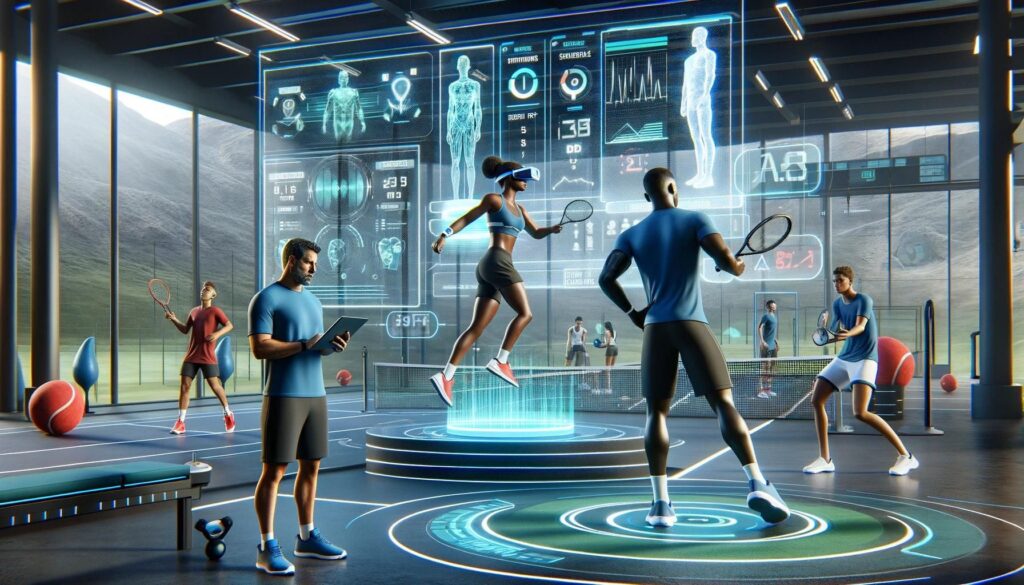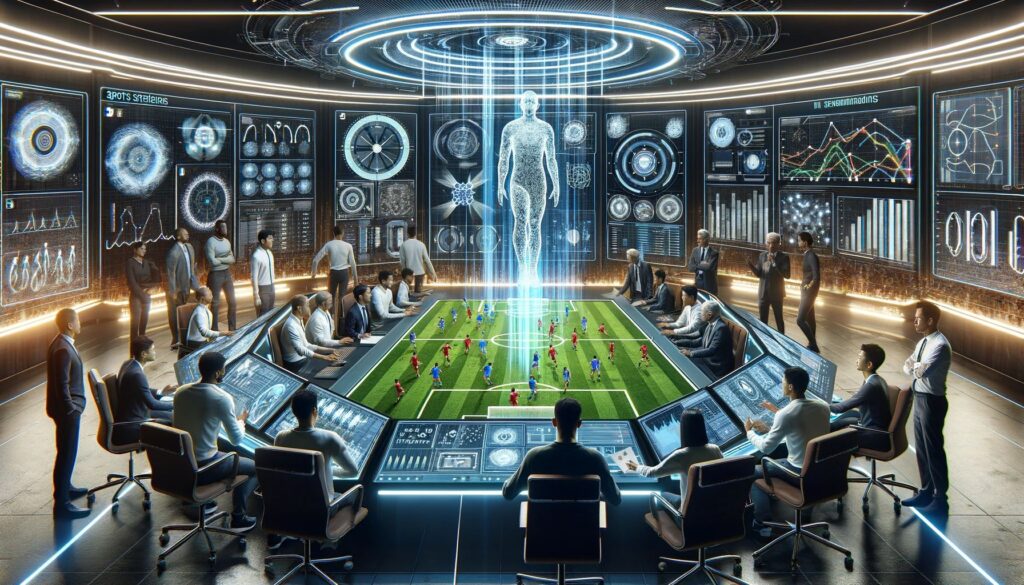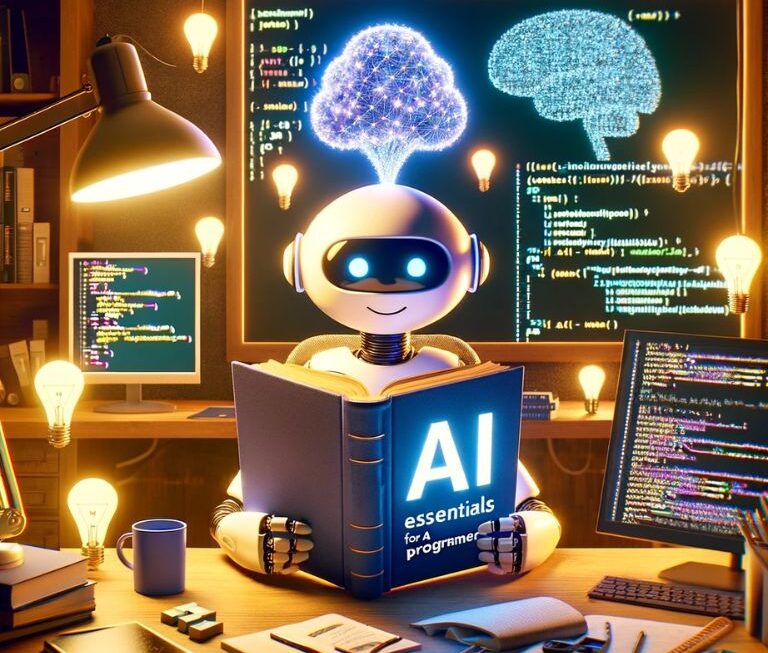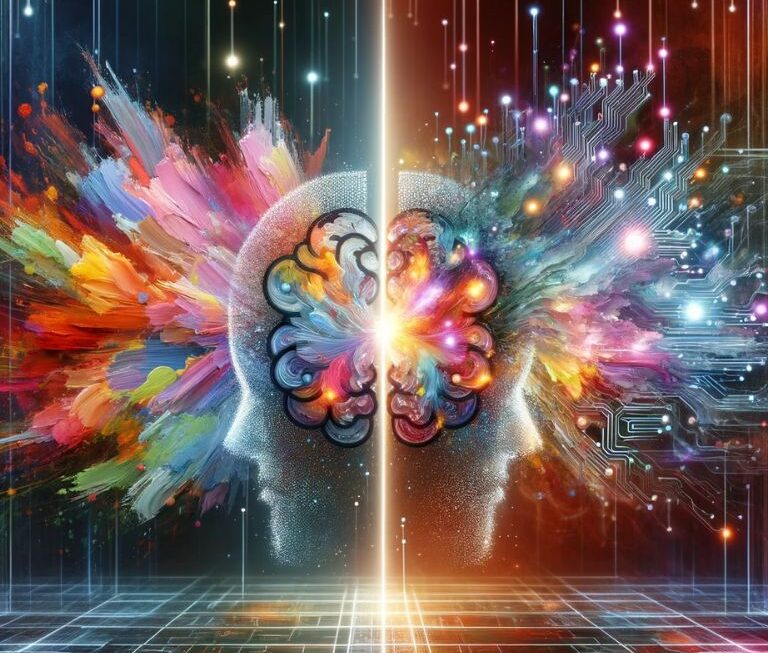The integration of Artificial Intelligence (AI) in sports has marked a new era in how athletes train, coaches strategize, and teams perform. Among the various applications of AI in this field, generative AI stands out for its ability to create new data and simulations, offering unprecedented insights into sports performance and training. This section delves into the essence of generative AI and traces its evolving role in the sports industry.
Understanding Generative AI
Generative AI refers to a subset of AI technologies that can generate new content, including text, images, and simulations. In sports, this technology is primarily used to analyze vast amounts of data – from player performance metrics to entire game strategies – and generate predictive models or simulations. These models help in understanding complex patterns and outcomes that are not easily discernible by human analysis alone.
The Evolution of AI in Sports
The journey of AI in sports has been transformative. Initially, its role was confined to basic data analysis and statistics. However, with advancements in machine learning and neural networks, AI’s capabilities have expanded exponentially. Today, generative AI is at the forefront, capable of simulating entire games, creating virtual training environments, and offering predictive insights that were once considered impossible.
- Early Stages: Statistical Analysis
- Initially, AI in sports was about analyzing player statistics and team performance data. This phase laid the groundwork for more advanced applications.
- Advancement: Machine Learning and Predictive Analytics
- The introduction of machine learning allowed for more sophisticated data analysis, including predictive analytics. This phase saw AI being used to predict outcomes based on historical data.
- Current Era: Generative AI and Simulation
- Currently, generative AI is revolutionizing sports by creating simulations and models that offer deep insights into performance enhancement and strategy formulation.
Impact of Generative AI in Sports
The impact of generative AI in sports is multifaceted:
- Performance Analysis: Coaches and athletes can now access detailed performance analyses, identifying strengths and areas for improvement more accurately.
- Training Enhancements: Customized training programs, created based on AI-generated data, cater to the specific needs and potential of each athlete.
- Injury Prevention: By analyzing data on player movements and physical stress, AI can predict and prevent potential injuries, aiding in safer training regimes.
- Strategic Planning: Teams are using AI to simulate games and strategies, giving them a competitive edge in planning and decision-making.
The role of generative AI in sports is not just transformative; it’s revolutionary. By enabling a deeper understanding of performance data and creating more effective training programs, AI is redefining the boundaries of athletic performance and strategic planning. As we continue to explore the capabilities of this technology, its potential to reshape the sports industry becomes increasingly evident.
Breaking Down Performance Analysis with AI
The application of generative AI in sports performance analysis represents a significant leap from traditional methods. This technology not only interprets vast arrays of data but also provides predictive insights that are reshaping how athletes and teams approach their training and strategies. In this section, we delve into the intricacies of AI-driven performance analysis.
AI Algorithms in Sports Data Interpretation
Generative AI operates through sophisticated algorithms capable of handling and analyzing complex sports data. These algorithms use machine learning techniques to identify patterns, trends, and correlations that might be invisible to the human eye. The process typically involves the following steps:
- Data Collection: Gathering extensive data from various sources, including sensors, wearables, video footage, and player statistics.
- Data Processing: Cleaning and organizing the data to ensure accuracy and relevance.
- Pattern Recognition: Using machine learning to identify patterns and trends in the data.
- Predictive Modeling: Generating predictions about future performances, potential injuries, and game outcomes.
Practical Applications of AI in Sports Performance
The practical applications of AI in sports performance analysis are diverse and impactful:
- Basketball: Enhancing Shooting Techniques
- AI analyzes shooting techniques by breaking down video footage and biomechanical data, providing players with personalized feedback to enhance their accuracy.
- Football: Tactical Decision Making
- AI systems analyze opponents’ gameplay, identifying patterns in their defense, which helps teams devise effective attacking strategies.
- Tennis: Optimizing Player Performance
- AI is used to analyze serve and stroke patterns in tennis, offering players tailored advice on optimizing their play style against different opponents.
The Future of AI in Performance Analysis
As AI technology continues to evolve, its potential in sports performance analysis is boundless. Future developments may include more advanced real-time analytics during games, deeper biomechanical assessments, and even AI-driven coaching systems.
Generative AI is transforming the landscape of sports performance analysis. By providing detailed, predictive insights, AI enables athletes and teams to achieve a level of performance optimization that was previously unattainable. As we continue to witness advancements in AI technology, its role in sports is set to become even more pivotal, driving innovations in training, strategy, and overall athletic excellence.
AI in Training: A New Era for Athletes

The integration of generative AI into sports training regimes marks a groundbreaking shift in how athletes prepare and improve. This technology not only customizes training programs but also introduces innovative methods like virtual reality (VR) to enhance skill development. In this section, we explore the transformative role of AI in sports training.
Customized Training Programs Powered by AI
Generative AI excels in creating personalized training programs by analyzing an athlete’s performance data, physical condition, and even psychological state. This data-driven approach ensures that each athlete receives a training regimen tailored to their unique needs and goals. The process involves:
- Individual Performance Analysis: AI systems analyze each athlete’s performance data to identify strengths and weaknesses.
- Customized Training Regimens: Based on this analysis, AI generates training programs that focus on specific areas of improvement.
- Ongoing Adjustment: As the athlete progresses, AI continuously updates the training program to adapt to their evolving needs.
Virtual Reality and AI in Skill Development
Virtual reality, combined with AI, is revolutionizing skill development in sports. This technology simulates real-game scenarios, allowing athletes to practice and hone their skills in a controlled, yet realistic environment. Key aspects include:
- Immersive Training Experience: VR provides a realistic and immersive training environment, enabling athletes to practice without the physical strain of a real game.
- Real-Time Feedback: AI algorithms analyze the athlete’s performance in the VR environment, offering instant feedback and suggestions for improvement.
- Scenario Simulation: Athletes can practice specific game scenarios repeatedly, which is invaluable for strategic training and mental preparation.
The Impact of AI on Physical and Mental Preparation
AI’s role in sports training extends beyond physical preparation. It also plays a crucial part in mental conditioning. By simulating high-pressure scenarios in VR, athletes can better prepare mentally for actual competitions. AI-driven analytics can also offer insights into psychological patterns that may affect performance, allowing for more holistic training approaches.
The integration of generative AI and VR in sports training is not just a technological advancement; it’s a paradigm shift in how athletes prepare and improve. This combination offers personalized, efficient, and comprehensive training methods, significantly enhancing both physical and mental aspects of athletic performance. As AI technology continues to evolve, its role in sports training is poised to become even more integral, promising a future where athletes can achieve their peak potential with unprecedented precision and efficiency.
Injury Prevention and Recovery: The AI Advantage
Injury prevention and recovery are critical components of sports training and performance. Generative AI has emerged as a powerful tool in this domain, offering predictive insights that help in reducing injury risks and enhancing recovery processes. This section delves into how AI is being utilized for injury prevention and recovery in sports.
AI in Predicting and Preventing Sports Injuries
The predictive capability of AI is a game-changer in injury prevention. By analyzing data on athletes’ training loads, biomechanics, and previous injury history, AI models can identify patterns and risk factors associated with injuries. This approach enables proactive measures to be taken before injuries occur. Key elements include:
- Risk Assessment: AI algorithms assess the risk of injury by analyzing various factors such as training intensity, fatigue levels, and biomechanical data.
- Personalized Recommendations: Based on risk assessments, AI systems provide personalized recommendations for training adjustments, rest periods, and preventive exercises.
- Continuous Monitoring: Wearable technology integrated with AI continuously monitors athletes, providing real-time data that helps in making immediate adjustments to training regimes.
Role of AI in Rehabilitation and Recovery Processes
AI’s role extends into the rehabilitation and recovery phase, offering tailored recovery programs and monitoring progress. This personalized approach ensures that athletes recover optimally and return to their sport safely. Key applications include:
- Customized Rehabilitation Programs: AI analyzes an athlete’s injury and recovery progress to create a customized rehabilitation program, focusing on specific areas for healing and strengthening.
- Progress Tracking: AI systems track the athlete’s recovery progress, adjusting the rehabilitation program as needed to optimize recovery.
- Predictive Recovery Timelines: By analyzing recovery data, AI can predict recovery timelines, aiding in planning and decision-making for both athletes and coaches.
| Application | Function | Impact |
|---|---|---|
| Injury Risk Assessment | Analyzing risk factors | Proactive injury prevention |
| Rehabilitation Programming | Customizing recovery plans | Optimized and safe recovery |
| Recovery Progress Tracking | Monitoring healing process | Efficient and targeted rehabilitation |
The Future of AI in Sports Medicine
The integration of AI in sports medicine is just beginning. Future advancements could include more sophisticated injury prediction models, AI-driven robotic rehabilitation assistants, and even real-time injury risk alerts during training and competitions.
Generative AI is significantly enhancing the way sports injuries are prevented and managed. By providing predictive insights and personalized recovery plans, AI not only helps in reducing the incidence of injuries but also ensures more effective and faster recovery processes. As AI technology continues to advance, its potential to revolutionize sports medicine and athlete care is immense, promising a future where athletes can train and compete with greater safety and confidence.
Enhancing Team Strategies with AI Insights
The strategic aspect of sports is where the game is often won or lost, and generative AI is playing an increasingly pivotal role in this arena. By providing deep insights into both a team’s and its opponents’ play, AI is reshaping how game strategies are developed and executed. This section explores the application of AI in enhancing team strategies.
AI in Game Strategy Development

AI’s ability to analyze vast amounts of data, including past games, player performances, and opponent tactics, allows teams to develop more informed and effective strategies. The process typically involves:
- Data Analysis: AI systems analyze historical data of both the team and its opponents, identifying patterns, strengths, and weaknesses.
- Strategy Simulation: Using this data, AI can simulate various game scenarios, helping coaches to understand potential outcomes of different strategies.
- Optimized Game Plans: Based on these simulations, teams can develop optimized game plans tailored to counter opponents’ strengths and exploit their weaknesses.
AI in Opposition Analysis
Understanding the opposition is crucial in sports, and AI significantly enhances this aspect. By analyzing the opponents’ previous games and tactics, AI provides insights that can be critical in planning a team’s approach. Key benefits include:
- Tactical Awareness: AI helps in understanding the tactical approaches of opponents, including their preferred formations and play styles.
- Player-Specific Strategies: AI can also focus on individual players, analyzing their tendencies and suggesting ways to effectively counter them.
- Real-Time Adjustments: Some AI systems can offer real-time insights during a game, allowing coaches to make tactical adjustments on the fly.
| Aspect | Application | Benefit |
|---|---|---|
| Game Strategy | Data-driven strategy development | Enhanced game planning and execution |
| Opposition Analysis | In-depth opponent study | Tailored approaches to counter specific teams/players |
| Real-Time Tactics | On-the-fly strategic adjustments | Dynamic response to game developments |
Real-World Examples of AI-Driven Strategic Decisions
Several sports teams across different disciplines have started to integrate AI into their strategic planning. For instance, a soccer team in Europe uses AI to analyze potential transfer targets, ensuring they fit the team’s tactical style. In basketball, AI is used to determine the most effective lineups and player rotations based on opponent analysis.
Generative AI is revolutionizing the strategic aspect of sports. By providing in-depth, data-driven insights, AI enables teams to develop more effective game strategies and adapt dynamically to opponents’ tactics. As AI technology continues to evolve, its role in sports strategy is set to become even more influential, potentially redefining how games are played and won.
The Ethical and Fair Play Considerations in AI-Driven Sports
As generative AI continues to transform the sports industry, it brings with it a host of ethical and fair play considerations. The use of advanced technology in sports raises questions about equality, data privacy, and the integrity of competition. This section delves into these critical aspects, exploring the balance between technological advancement and ethical sportsmanship.
Addressing Fairness in AI Application
One of the primary concerns with AI in sports is ensuring fairness. As AI technology becomes more sophisticated and accessible, there’s a growing need to establish guidelines that prevent any form of technological advantage that undermines fair competition. Key considerations include:
- Accessibility: Ensuring that AI tools and data are accessible to all teams and athletes to avoid creating an uneven playing field.
- Standardization: Developing standardized regulations on the use of AI in sports to ensure that all parties are competing under the same set of rules.
- Transparency: Maintaining transparency in how AI tools are used and the data they generate, to uphold the integrity of sports.
Balancing Technology and Human Elements
While AI brings numerous benefits to sports, it’s crucial to maintain a balance between technological and human elements. The essence of sports lies in human performance and unpredictability, and over-reliance on technology could diminish these aspects. Strategies to maintain this balance include:
- Human Oversight: Ensuring that AI recommendations and strategies are ultimately overseen and implemented by human coaches and staff.
- Limiting AI Influence: Setting limits on the extent to which AI can influence decision-making in sports, to preserve the human aspect of the game.
- Promoting Athlete Skills: Focusing on how AI can enhance, rather than replace, the natural skills and abilities of athletes.
Ethical Use of Data
The use of AI in sports relies heavily on data, raising concerns about privacy and ethical data usage. Athletes and teams must be assured that their data is used responsibly and securely. Essential measures include:
- Data Privacy: Implementing strict data privacy policies to protect the personal and performance data of athletes.
- Consent and Control: Ensuring that athletes have control over their data and consent to how it is used.
- Secure Data Handling: Employing robust security measures to prevent unauthorized access to sensitive data.
The integration of AI in sports, while beneficial, necessitates a careful consideration of ethical and fair play issues. Balancing technological advancement with fairness, maintaining the human element in sports, and ensuring ethical data use are crucial for the sustainable and responsible integration of AI in the sports industry. As AI continues to evolve, these considerations will remain at the forefront, guiding the development of policies and practices that uphold the integrity and spirit of sports.
The Future of Sports with Generative AI
Looking ahead, generative AI’s potential in sports promises a paradigm shift in playing, analyzing, and experiencing sports. This section explores the emerging trends and future predictions for AI in sports, highlighting how it could reshape training, performance analysis, and the overall sports landscape.
Emerging Trends in AI and Sports
The future of sports with AI is marked by several emerging trends that are set to redefine the industry:
- Advanced Real-Time Analytics: The future may see AI systems providing real-time analytics during games, offering instant insights to coaches and players for on-the-spot strategic decisions.
- Enhanced Fan Experience: AI could transform the fan experience, with personalized content, predictive game analysis, and interactive viewing experiences.
- AI in Talent Scouting: AI algorithms could become more prevalent in identifying and nurturing sporting talent, analyzing data from grassroots to professional levels to spot potential stars.
Future Predictions for AI in Sports
Looking forward, we can anticipate several developments in the application of AI in sports:
- Ubiquitous Wearable Technology: Wearable technology will increasingly integrate AI, continuously collecting and analyzing data to enhance performance and prevent injuries.
- Virtual Coaches and Trainers: AI-powered virtual coaches could become a norm, offering personalized training and feedback to athletes at all levels.
- Ethical AI Governance: As AI becomes more integral to sports, the establishment of ethical governance frameworks to regulate AI use will be crucial.
How AI Could Reshape Sports Training and Performance Analysis
The continuous evolution of AI is set to revolutionize sports training and performance analysis in several ways:
- Personalized Athlete Development: AI will enable even more personalized training programs, tailored to the specific needs and potential of each athlete.
- Injury Prediction and Prevention: Advanced AI models will likely predict injuries with greater accuracy, leading to more effective prevention strategies.
- Strategic Game Analysis: AI’s role in analyzing and formulating game strategies will become more sophisticated, potentially leading to a new era of AI-assisted coaching.
The future of sports with generative AI is a landscape of endless possibilities. AI transforms athlete training and competition, redefines fan experiences, and ensures ethical technology use, marking a lasting impact on the sports world. As we embrace these advancements, the focus will be on harnessing AI’s potential while maintaining the integrity and spirit of sports.
The Transformative Impact of AI in Sports
The integration of generative AI into sports marks a revolutionary shift, profoundly impacting performance analysis, training methodologies, injury prevention, and strategic planning. This technology has not only enhanced the way athletes train and compete but also brought forward crucial considerations regarding ethical practices and fair play. As AI continues to evolve, it promises further advancements in real-time analytics, virtual training, and personalized athlete management. However, this journey also necessitates a balanced approach, ensuring that the growth in AI capabilities aligns with the core values of sportsmanship and the integrity of competitive sports.
In conclusion, the role of AI in sports is a testament to the incredible potential of technology to redefine the boundaries of human performance and strategic thinking in athletics. While embracing these advancements, it’s essential to navigate this new era with a commitment to ethical practices, maintaining the human element in sports, and upholding the spirit of fair competition. The future of sports with AI is not just about technological prowess but also about harmonizing these innovations with the timeless values that define sports across generations.




